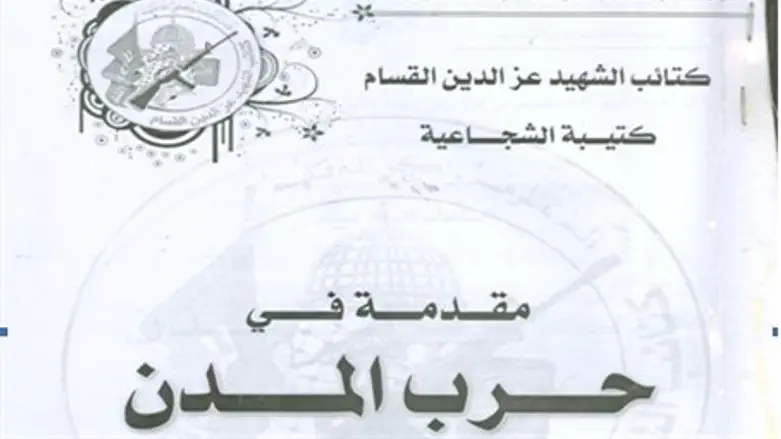
The IDF has published excerpts from a captured Hamas combat manual on "Urban Warfare", showing how the Islamist terrorist group exploits civilian casualties - and the knowledge that the IDF will seek to avoid them - to its advantage.
The IDF says the manual was captured in Shujaiya suburb of Gaza City, which was the scene of particularly heavy fighting between Israeli forces and Hamas and Islamic Jihad terrorists.
Among other things, the manual urges Hamas fighters to exploit the IDF's desire to minimize civilian casualties, noting:
"The soldiers and commanders (of the IDF) must limit their use of weapons and tactics that lead to the harm and unnecessary loss of people and [destruction of] civilian facilities. It is difficult for them to get the most use out of their firearms, especially of supporting fire [e.g. artillery]."
Echoing official Hamas rhetoric, which glorifies civilians used as human shields as "holy warriors" and "martyrs", the manual says that the "presence of civilians are pockets of resistance", in that their presence can contribute to the organization's war effort in three specific ways:
(1) Problems with opening fire
(2) Problems in controlling the civilian population during operations and afterward
(3) Assurance of supplying medical care to civilians who need it
Apart from the use of human shields, the manual also sheds light on Hamas's use of the civilian infrastructure of Gaza to rally support.
Much of Hamas's military infrastructure and hardware is stored in residential homes - usually of its members - complicating the IDF's efforts to reach them in aerial strikes.
An expose by Indian NDTV highlighted how terrorists deliberately set up rocket launchpads in heavily-populated residential areas, risking severe collateral damage in the event of an IDF retaliation. Thee manual illustrates how even if civilians heed IDF warning to leave - which Hamas encourages them to ignore - the destruction to homes can be used to their advantage as well:
"The destruction of civilian homes: This increases the hatred of the citizens towards the attackers [the IDF] and increases their gathering [support] around the city defenders (resistance forces[i.e. Hamas])."
Illustrating the point, a recent AFP report told of how a Palestinian civilian returned to his house following the 72-hour ceasefire currently in effect - only to find evidence it had been taken over and used as a military position by terrorists.
"Is this is really my town?" asked Khayri Hasan al-Masri, a father of three who returned to heavily-damaged Beit Hanun in the north for the first time since fleeing for his life when the ground offensive began on July 17. Gaping holes have pierced the walls of his home. There is a mortar in the living room, a bazooka upstairs.
"What am I going to tell my wife and children? I don't want them to see this! They will go crazy. How can I explain all this?" he sighed, crunching over debris.
